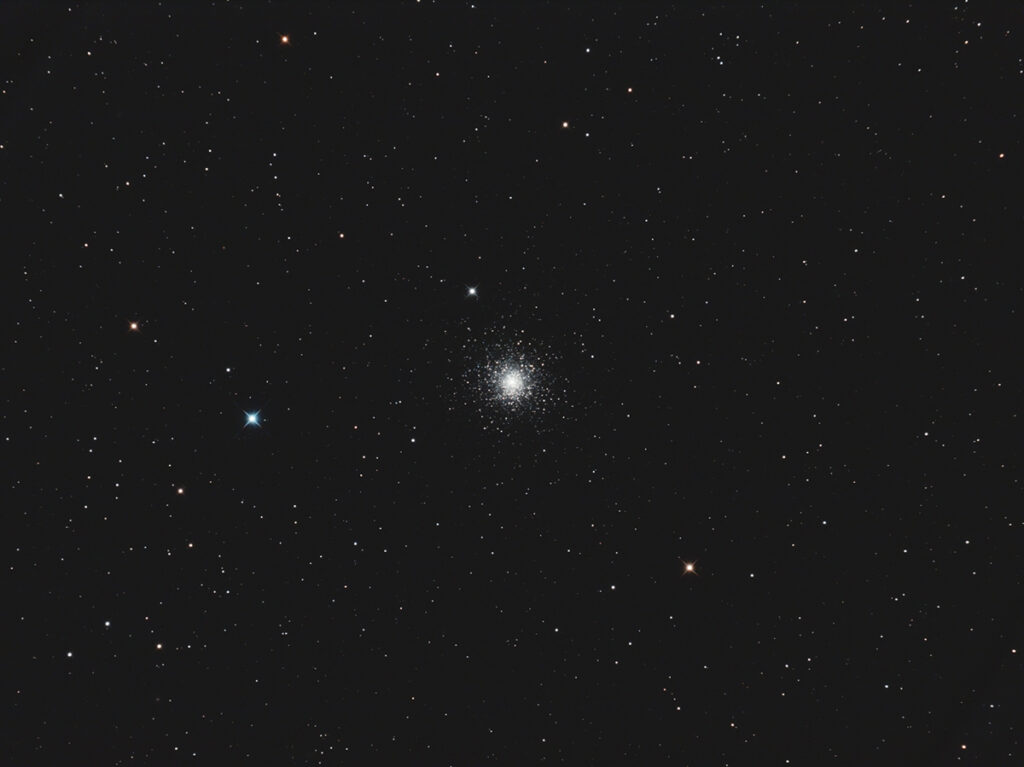
Telescope: Astro-Tech 8” f/8 Ritchey-Chretien, Orion Atlas EQ-G
Camera: Canon EOS Ra, Baader Mk III MPCC
Filter: Orion Imaging Skyglow Filter
Guide scope: Astro-Tech 60mm, Starlight Xpress Super Star, PHD2
Exposure: 43x60sec, ISO 800, saved as RAW
Darks: Internal (Long Exposure Noise Reduction On)
Flats: 32×1/25sec, Tee shirt flats taken at dusk
Average Light Pollution: Red zone, Bortle 8, fair transparency, haze
Lensed Sky Quality Meter: 18.4
Stacking: Simple average to accommodate the two different exposure times
White Balance: Nebulosity Automatic
Software: Backyard EOS, Deep Sky Stacker, Nebulosity, Photoshop
M15, a bright, condensed globular cluster in a relatively lonely stretch of sky in Pegasus. It is one of the oldest known globular clusters with an estimated age of 13.2 billion years and the first globular cluster found to have a planetary nebula (Pease 1), one of only four planetary nebula associated with a globular cluster. M15 is also one of the most condensed globular cluster and at some point in the distant past it experienced a core collapse that may have heralded the formation of a black hole in its nucleus. This is supported by the fact the M15 is an x-ray source.
This is the last of three first-light images taken with my new Canon EOS Ra camera. I had originally planned to end the evening with an emission nebula, but the hazy sky conditions didn’t look suitable, so I opted for a bright globular instead.
M15 is currently well placed rising the east in the early evening and is high in the south at dawn.
Recent Comments